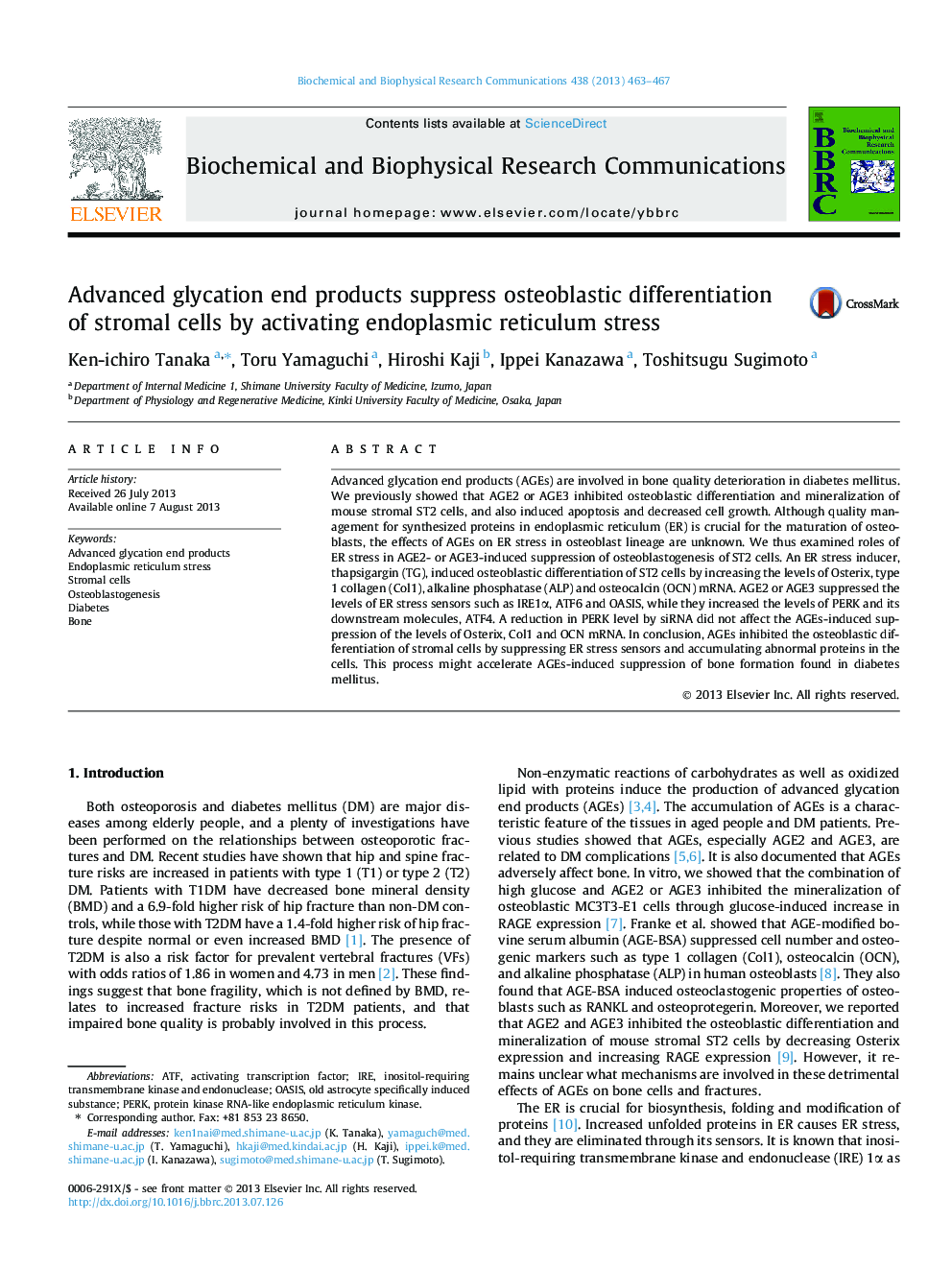| کد مقاله | کد نشریه | سال انتشار | مقاله انگلیسی | نسخه تمام متن |
|---|---|---|---|---|
| 1928635 | 1050400 | 2013 | 5 صفحه PDF | دانلود رایگان |

• AGEs are involved in bone quality deterioration in diabetes mellitus.
• ER is crucial for osteoblasts to produce good quality bone matrix proteins.
• An ER stress inducer induced osteoblastic differentiation of stromal ST2 cells.
• AGE2 or AGE3 inhibited ER stress sensors such as IRE1α, ATF6 and OASIS.
• AGEs inhibited osteoblastgenesis of ST2 cells by suppressing ER stress sensors.
Advanced glycation end products (AGEs) are involved in bone quality deterioration in diabetes mellitus. We previously showed that AGE2 or AGE3 inhibited osteoblastic differentiation and mineralization of mouse stromal ST2 cells, and also induced apoptosis and decreased cell growth. Although quality management for synthesized proteins in endoplasmic reticulum (ER) is crucial for the maturation of osteoblasts, the effects of AGEs on ER stress in osteoblast lineage are unknown. We thus examined roles of ER stress in AGE2- or AGE3-induced suppression of osteoblastogenesis of ST2 cells. An ER stress inducer, thapsigargin (TG), induced osteoblastic differentiation of ST2 cells by increasing the levels of Osterix, type 1 collagen (Col1), alkaline phosphatase (ALP) and osteocalcin (OCN) mRNA. AGE2 or AGE3 suppressed the levels of ER stress sensors such as IRE1α, ATF6 and OASIS, while they increased the levels of PERK and its downstream molecules, ATF4. A reduction in PERK level by siRNA did not affect the AGEs-induced suppression of the levels of Osterix, Col1 and OCN mRNA. In conclusion, AGEs inhibited the osteoblastic differentiation of stromal cells by suppressing ER stress sensors and accumulating abnormal proteins in the cells. This process might accelerate AGEs-induced suppression of bone formation found in diabetes mellitus.
Journal: Biochemical and Biophysical Research Communications - Volume 438, Issue 3, 30 August 2013, Pages 463–467